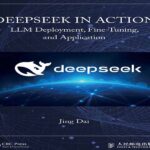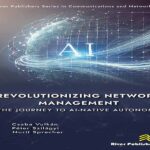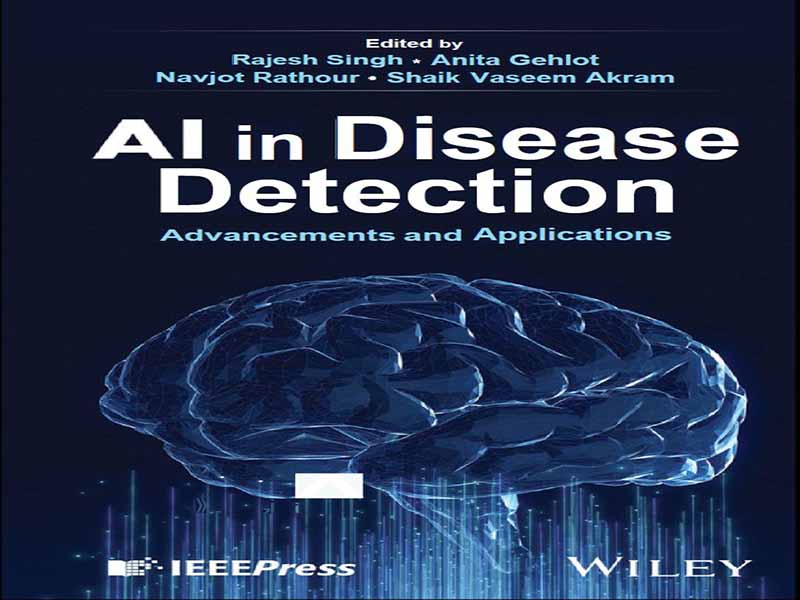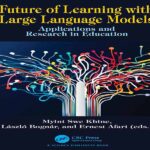- عنوان کتاب: AI in Disease Detection
- نویسنده: Rajesh Singh
- حوزه: کاربرد هوش مصنوعی در پزشکی
- سال انتشار: 2025
- تعداد صفحه: 392
- زبان اصلی: انگلیسی
- نوع فایل: pdf
- حجم فایل: 6.22 مگابایت
ادغام تشخیص بیماری و هوش مصنوعی (AI) یک تغییر پارادایم در پزشکی مدرن را پیشبینی میکند که زمین بازی را به سمت مرز جدیدی در اقدامات تشخیصی و ارائه مراقبتهای بهداشتی متعادل میکند. اخیراً، در دهه گذشته، افزایش چند برابری در قدرت محاسباتی به موازات رشد متناظر در دادههای مراقبتهای بهداشتی صورت گرفته است، که هر دو پیشروی پیشرفتهای بیسابقه در تشخیص بیماریهای مبتنی بر هوش مصنوعی هستند. این فصل یک نمای کلی از تغییر چشم انداز هوش مصنوعی در تشخیص بیماری ارائه می دهد. این نوآوریها و روندهای آتی را که احتمالاً عمل بالینی را در آینده تغییر میدهند، بررسی میکند. در قلب این دگردیسی، قدرت الگوریتمهای یادگیری عمیق، روشهای هوش مصنوعی با الهام از آرایش و عملکرد نئوکورتکس قرار دارد. یادگیری عمیق (DL) در رمزگشایی الگوهای پیچیده از مجموعه داده های بزرگ بسیار خوب است. از این رو، یادگیری عمیق می تواند امکان تجزیه و تحلیل سریع و دقیق تصویربرداری پزشکی، توالی ژنومی، پرونده الکترونیک سلامت (EHRs) و سایر روش های داده سلامت را فراهم کند. با استفاده از این پتانسیل، هوش مصنوعی به پزشکان با دقت بهبود یافته در تشخیص قدرت میدهد، بنابراین امکان تشخیص زودهنگام بیماریهای مختلف مانند سرطان و اختلالات قلبی عروقی یا حتی بیماریهای عصبی را فراهم میکند. با این حال، معرفی هوش مصنوعی در تشخیص بیماری کار آسانی نیست. احتمالاً، بیشتر نگرانیها بر روی کدورت ذاتی مدلهای DL متمرکز است که اغلب به عنوان مشکل «جعبه سیاه» شناخته میشود. در مقایسه با روشهای تشخیص سنتی – که در آن یک پزشک استدلال پشت تصمیمها را توضیح میدهد – الگوریتم AI یک ساختار ریاضی باطنی است و فرآیندهای تصمیمگیری آن به سادگی توسط انسان قابل درک نیست. بنابراین، ترکیب تشخیصهای مبتنی بر هوش مصنوعی نیاز به یک تغییر پارادایم گسترده در نحوه مشاهده توصیههای الگوریتمی توسط پزشکان و ایجاد اعتماد در آنها دارد. علاوه بر این، آموزش مدلهای هوش مصنوعی در چنین مجموعه دادههای بزرگی نگرانیهای اخلاقی، حریم خصوصی و امنیتی را افزایش میدهد. تجمیع چنین دادههای حساس بیمار با چالشهای عظیمی در رابطه با حریم خصوصی و محافظت در برابر سوگیری در الگوریتمها مرتبط است. پرداختن به این نگرانی ها برای پذیرش و اعتماد تشخیص مبتنی بر هوش مصنوعی در بین متخصصان مراقبت های بهداشتی و بیماران به طور یکسان بسیار مهم است. در مقابل این پسزمینه است که تحقیقات فعلی به بررسی نوآوریهایی میپردازد که آرزوی غلبه بر این چالشها را دارند و به معنای واقعی، قدرت هوش مصنوعی را در تشخیص بیماری آزاد میکنند. با ادغام تکنیکهای همجوشی چندوجهی، محققان میتوانند از منابع داده نسبتاً متفاوت استخراج کنند و از این رو، مشخصات نسبتاً دقیقی از بیمار برای بهبود دقت تشخیصی و شخصیسازی بسازند. ثابت شده است که یادگیری انتقالی یکی از رویکردهای بسیار امیدوارکننده است، که می تواند با تطبیق بی دردسر مدل های عمیق آموزش از قبل آموزش دیده برای تشخیص بیماری خاص با حداقل داده های برچسب گذاری شده، از تمام محدودیت های کمبود داده جلوگیری کند. علاوه بر این، در افق، تکنیکهای هوش مصنوعی قابل توضیح (XAI) نوید افزایش قابلیت تفسیر برای تشخیصهای مبتنی بر هوش مصنوعی را به واقعیت میبخشد. این شکاف بین توصیه های الگوریتمی و تصمیم گیری بالینی را پر می کند. XAI توضیح شفافی از پیشبینیهای تولید شده توسط هوش مصنوعی ارائه میکند و درک و اعتماد پزشک را به خروجیهای الگوریتمی تقویت میکند. این امکان را برای همکاری بین متخصصانی که «مانند انسان» با سیستمهای هوش مصنوعی عمل میکنند باز میکند. یادگیری فدرال یکی دیگر از پارادایم های آینده است که می تواند حریم خصوصی را حفظ کند اما به طور مشترک مدل های یادگیری ماشین (ML) را در سراسر اکوسیستم های مراقبت بهداشتی غیرمتمرکز آموزش دهد. یادگیری فدرال ذخیره سازی داده ها و آموزش مدل را غیرمتمرکز می کند تا نگرانی های مربوط به حفظ حریم خصوصی و امنیت داده ها را برطرف کند و در عین حال مدل های هوش مصنوعی را قادر می سازد از جمعیت های متنوع بیماران بیاموزند. مسیر ادغام مسئول هوش مصنوعی در تشخیص بیماری باید از طریق یک سنتز معتبر بین این نوآوری ها و روندهای نوظهور شناسایی شود، که به پیشرفت پارادایم پزشکی دقیق و افزایش نتایج مراقبت های بهداشتی برای بیماران در سراسر جهان کمک می کند.
The merger of disease detection and artificial intelligence (AI) predicts a paradigm shift in modern medicine that rebalances the playing field toward a new frontier in diagnostic practices and healthcare delivery. Quite recently, within the last decade, there has been manifold augmentation in computational power paralleled by a corresponding growth in healthcare data, both forerunners to unprecedented developments in AI-driven disease detection. This chapter gives an overview of the changing landscape of AI in disease detection. It reviews innovations and upcoming trends that are likely to transform clinical practice in the future. At the heart of this metamorphosis lies the power of deep learning algorithms, AI methods inspired by the arrangement and functionality of the neocortex. Deep learning (DL) is very good at deciphering complex patterns from large datasets. Hence, deep learning can allow fast and accurate analysis of medical imaging, genomic sequences, electronic health records (EHRs), and other health data modalities. Drawing on this potential, AI empowers clinicians with improved accuracy in diagnosis, thus allowing for very early detection of various diseases, such as cancer and cardiovascular disorders, or even neurological conditions. However, introducing AI into disease detection does not come easy. Probably, most of the concerns are focused on the intrinsic opacity of DL models, often referred to as the “black box” problem. Compared to the traditional diagnosis methods –where a clinician explains the reasoning behind the decisions –the AI algorithm is an esoteric mathematical construct, and its decision processes simply cannot be fathomed by human beings. Thus, incorporating AI-driven diagnostics will call for a massive paradigm shift in how clinicians view algorithmic recommendations and build trust in them. Moreover, the training of AI models on such large datasets further raises ethical, privacy, and security concerns. The aggregation of such sensitive patient data is connected with enormous challenges regarding privacy and protection against bias in algorithms. Addressing these concerns will be critical in enabling the acceptance and trust of AI-driven diagnostics among healthcare professionals and patients alike. It is against this backdrop that the current research sets out to explore innovations that aspire to surmount these challenges and, in a real sense, unleash the power of AI in disease detection. By integrating multimodal fusion techniques, researchers can draw from relatively disparate data sources and, hence, compose a rather detailed profile of a patient for improved diagnostic accuracy and personalization. Transfer learning has proven to be one of the very promising approaches, which can avoid all the limitations of data scarcity by effortlessly adapting pretrained deep models of learning for specific disease detection with minimal labeled data. Furthermore, on the horizon, techniques of explainable AI (XAI) bring the promise of enhanced interpretability for AI-driven diagnoses into reality; it would bridge the gap between algorithmic recommendations and clinical decision-making. XAI offers a transparent explanation of the AI-generated predictions, empowering a clinician’s understanding and trust in algorithmic outputs. This opens the possibility for collaboration between experts “acting human-like” with AI systems. Federated learning is another upcoming paradigm that can maintain privacy but collaboratively train machine learning (ML) models across decentralized healthcare ecosystems. Federated learning decentralizes data storage and model training to address concerns about data privacy and security while enabling AI models to learn from diversified patient populations. The trajectory for the responsible integration of AI in disease detection is to be identified through an authentic synthesis between these innovations and emerging trends, contributing to advancing the paradigm of precision medicine, and boosting healthcare outcomes for patients worldwide.
این کتاب را میتوانید از لینک زیر بصورت رایگان دانلود کنید:
Download: AI in Disease Detection




































نظرات کاربران